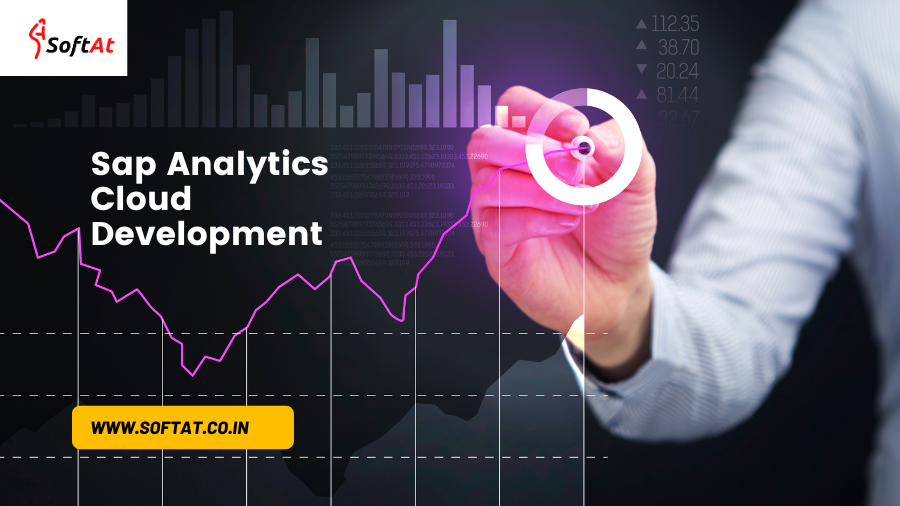Embarking on the journey of SAP Analytics Cloud development opens doors to a world where data becomes a powerful asset, driving informed decision-making and strategic planning. In this exploration, we’ll delve into the significance, components, advantages, and challenges.
Significance of SAP Analytics Cloud Development
Empowering Data-Driven Decision-Making
SAP Analytics Cloud isn’t just a tool; it’s a catalyst for data-driven decision-making. By seamlessly integrating with various data sources, it empowers organizations to harness the full potential of their data.
Integration with SAP and Non-SAP Data Sources
One of the standout features is its versatility in integration. Whether your data resides in SAP systems or external sources, SAP Analytics Cloud facilitates a unified view, breaking down silos and enabling holistic insights.
Key Components of SAP Analytics Cloud Development
Building Stories and Dashboards
At the heart of Cloud development are interactive stories and dashboards. These enable users to create compelling narratives, turning raw data into insightful visualizations.
Data Modeling with Live and Imported Data
Flexibility in data modeling is a cornerstone. Developers can work with live connections to data sources or import data for offline analysis, tailoring the approach to specific project needs.
Integration with SAP BW and SAP HANA
For organizations leveraging SAP’s data warehousing solutions, the seamless integration with SAP BW (Business Warehouse) and SAP HANA brings a wealth of possibilities for sophisticated analytics.
Advantages of SAP Analytics Cloud Development
Real-Time Data Visualization
The need for real-time insights is addressed through dynamic visualizations. Whether tracking sales performance or monitoring operational metrics, SAP Analytics Cloud provides real-time visibility.
Collaboration and Sharing Capabilities
Decision-making is a collaborative process, and SAP Analytics Cloud understands this. With built-in collaboration features, teams can work together, share insights, and collectively drive business outcomes.
Predictive Analytics Features
The inclusion of predictive analytics elevates the platform. From forecasting trends to identifying outliers, organizations can move from reactive to proactive decision-making.
Getting Started with SAP Analytics Cloud Development
Setting up Analytics Cloud Environment
Before diving into development, it’s essential to set up the SAP Analytics Cloud environment. This involves configuring user access, connecting to data sources, and defining security parameters.
Creating a New Analytics Project
The initiation of a new analytics project involves defining project goals, selecting data sources, and structuring the project layout. This foundational step sets the tone for the entire development process.
SAP Analytics Cloud Development Workflow
Data Preparation and Import
Successful analytics start with robust data preparation. Whether working with live data or importing datasets, cleanliness and accuracy are non-negotiable.
Building Compelling Visualizations
Creating impactful visualizations is an art. SAP Analytics Cloud provides a range of visualization options, from traditional charts to advanced visual storytelling elements, empowering developers to convey insights effectively.
Applying Advanced Analytics
For organizations aiming to go beyond basic reporting, the platform offers advanced analytics capabilities. This includes predictive forecasting, machine learning algorithms, and statistical analysis tools.
Best Practices in SAP Analytics Cloud Development
User-Centric Design
Prioritize user experience in design. Intuitive dashboards and stories enhance usability, ensuring that end-users can easily interact with and derive insights from the analytics.
Data Security and Governance
In the era of data privacy and compliance, ensuring robust security measures is paramount. This involves defining access controls, encrypting sensitive data, and implementing governance policies.
Regular Performance Optimization
As analytics projects evolve, regular performance optimization becomes crucial. This involves fine-tuning queries, optimizing data models, and ensuring that dashboards maintain responsiveness.
Challenges in SAP Analytics Cloud Development
Data Integration Complexities
Bringing together data from diverse sources can present integration challenges. Robust data integration strategies and tools are essential to address this complexity.
Ensuring Data Accuracy in Visualizations
The accuracy of insights hinges on the accuracy of data visualizations. Developers must meticulously verify data sources, perform validation checks, and maintain data accuracy throughout the development process.
Future Trends in SAP Analytics Cloud Development
Enhanced AI and Machine Learning Integration
The future holds exciting possibilities with enhanced integration of artificial intelligence (AI) and machine learning (ML) in SAP Analytics Cloud. This will elevate predictive analytics and provide deeper insights.
Expansion of Augmented Analytics Features
Augmented analytics, where machine learning automates data analysis, will see expansion. This trend will empower users with automated insights, reducing dependency on manual analysis
Read More:





